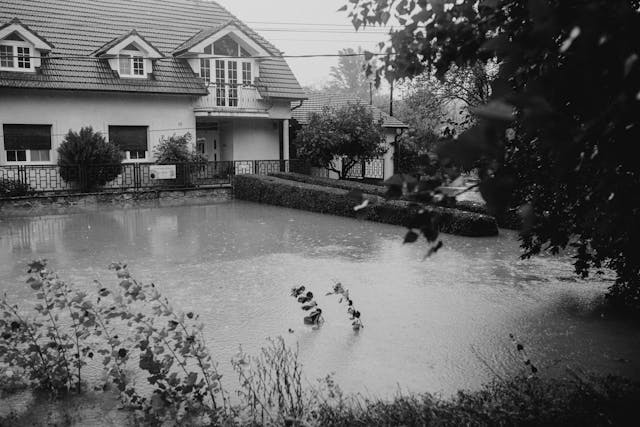The Royal Institute of Chartered Surveyors warns that if you can’t get insurance for your home, you’re in big trouble. Mortgage lenders will not lend to uninsurable homes and as a result can depreciate up to 80% in value.
It is a major flood risk and is likely to make your home uninsurable. According to a recent survey, 6.5 million homes are already at risk of flooding, of which 1.5 million are in high-risk areas. The government has completed flood defenses in many of these areas, and another 80,000 homes are due to be protected this year. But concerns were also expressed about the 120,000 new homes planned for Thames Gate which would potentially be in a high ‘at risk’ area. However, many areas are still at risk. And if global warming continues, by 2030 the 1.5 million at risk could reproduce 3.5 million. In 2003, the Association of British Insurers (ABI) agreed to principles that required British insurers to offer home and contents insurance for properties in areas assessed to be at risk of flooding once every seventy-five years or more. The runner was that the flood defenses should already be in place or be completed by the end of 2007.
The Department of Environment, Food and Rural Affairs (DEFRA) has responsibility for developing and maintaining these flood defenses, but there is widespread concern within the insurance industry that not enough progress is being made. As a result, insurers have warned the government of the potential for large-scale withdrawal of insurance cover if the advance intensifies.
Meanwhile, those who live in areas threatened by flood waters may find their insurance premiums too high. While the insurance industry agreed to provide insurance cover, their commitment was simply to maintain premiums at “reasonable” levels. But there was no definition of what “reasonable” meant. As a result, premium increases of 60% were common with 400% increases in bad areas. In a few cases has the cover been pulled entirely, mostly in areas of the country where DEFRA considers the cost of defending a group of a few homes uneconomical.
Environmentalists warn that unless DEFRA wears ski boots, the UK’s current bill for flood damage could rise from £950m a year to £3.2bn. After all, the average home flood damage insurance claim is £30,000 – that’s higher than fire damage. And local events such as the 2004 flood in Boscastle, Cornwall, can cost insurers more than £15m.
If you are in any doubt as to whether your home or proposed home is in a flood risk area, you should visit http://www.environment-agency.gov.uk. This is the DEFRA website where you can check if they think your home is at risk of flooding. Their maps were originally designed for planning purposes and providing information on a postal code basis.
While many insurance companies use DEFRA information, others like More Than have their own flood maps. These homes are assessed individually rather than in zip code areas. This means that if your current insurer increases your premium for flood risk and uses DEFRA information, you may still be able to get a cheaper rate from the insurer using their flood data if their data determines that your property is outside the “risk” zone.
ABI recently added pressure on DEFRA to accelerate construction and development of flood defences. She warned that unless the government increased its spending on flood defences, the insurance industry might not continue to adhere to the 2003 principles.
This would be bad news for many homeowners.












